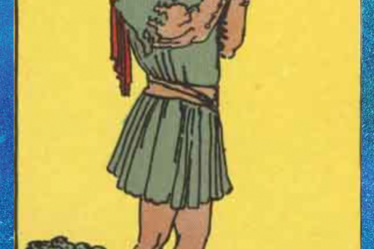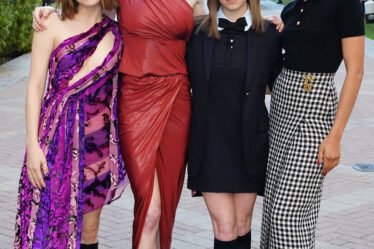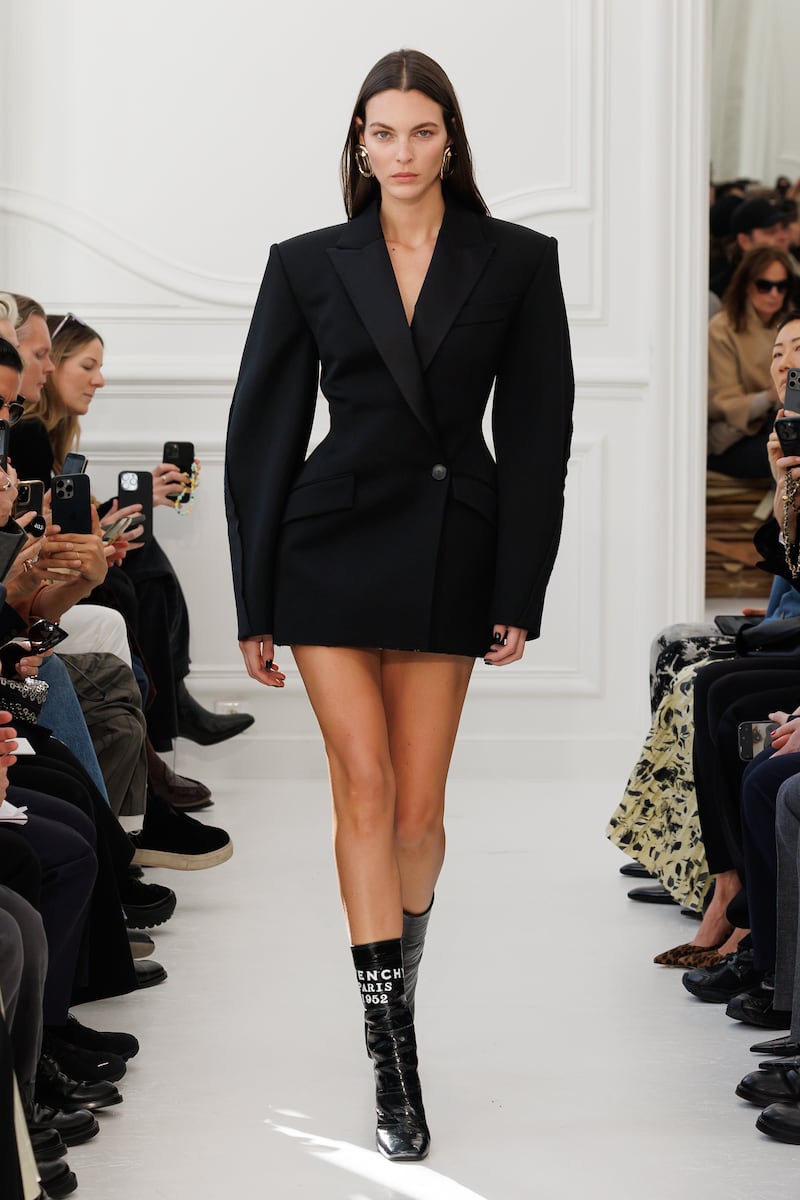
Facing the challenge of her new position as creative director of Givenchy, Sarah Burton had been asking herself the inevitable questions. What does Givenchy stand for? Where do I want to begin? Since Count Hubert himself retired in 1995, the house has bounced from pillar to post under owner LVMH. While it’s true that risks were taken with the creative directorship over the years, the designer churn also suggested the brand was less of a priority than its larger stablemates.
Burton’s solution has been to take Givenchy back to ground zero, with a peculiar turn of events confirming her in her decision. During recent renovations at his couture house’s original premises, the calico patterns for Hubert de Givenchy’s couture debut in 1952 were found hidden in a cupboard behind a wall. It was a nudge for her to honour the maison’s origins, strip away the intervening years, return to first principles: cut, silhouette, proportion. She felt it wasn’t just something that was necessary for Givenchy. After 26 years at McQueen, 13 of them as creative director, Burton needed it for herself.
On Friday morning, she showed her first collection for Givenchy in the salon on 3 Avenue Georges V, the maison’s address since 1955, also stripped back to its original bones to greet the new arrival. It’s the same building where she first worked with Lee McQueen when he was Givenchy’s creative director in the late 90s. Nuggety East Ender Lee and aristocratic beanpole Hubert never crossed paths. No prizes for guessing what they would have thought of each other. But in its commitment to those first principles, the collection Burton showed on Friday spoke a language Hubert would have understood.
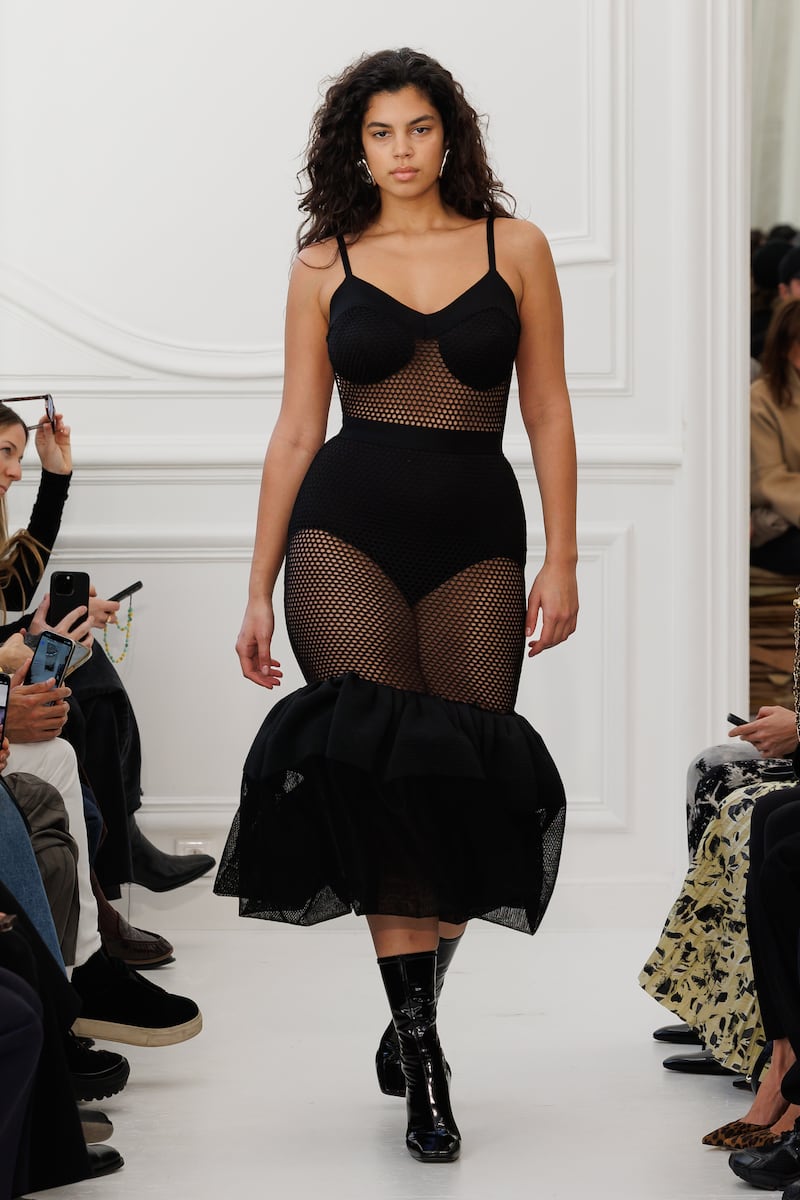
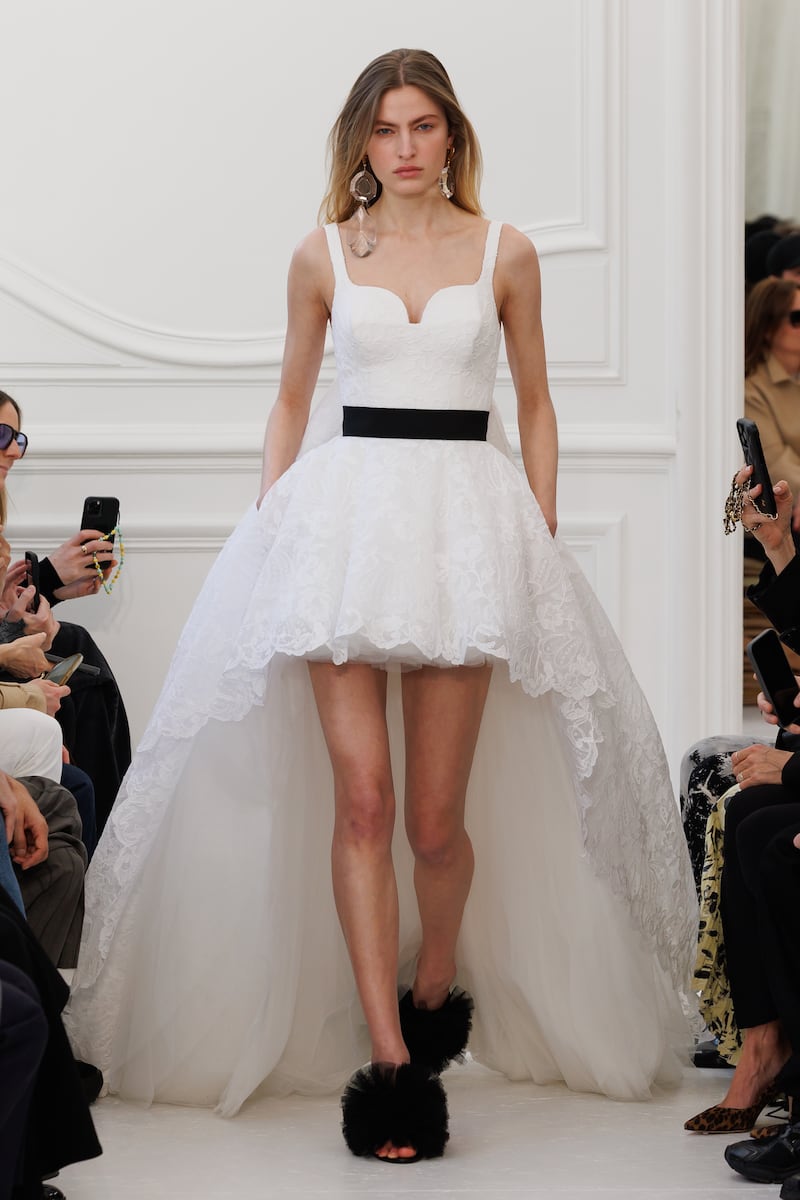
“I like to find out the foundation so I can ground what I’m going to build the house on,” she said in a preview. “I didn’t copy the pieces or the patterns from 1952, but that’s the essence of what I want to say. If I understand its very beginning, then I can kind of twist it on its head to make it mean what I want. And I’d like it to mean today to women, because ultimately, that’s what it needs to say.”
Burton will soon be relaunching Givenchy’s couture business, and there was plenty in her ready-to-wear to hint at how she feels about such an opportunity. So, yes, there was a heady undercurrent of that couture long-ago running through her debut: Chantilly lace, bullet bras, bracelet sleeves, a classic cocoon shape and sack backs (she wasn’t sure if they might properly be referred to as “Watteau” backs), the drama of a bold bow or an hourglass waist.
But looking back at photos of Givenchy’s 1952 show, Burton was equally struck by other, darkly alluring incongruities. She kept thinking of Hitchcock. She flashed an image of a black dress that she thought looked fetishistic, like a Mapplethorpe photo, or something Lydia Lunch or another denizen of New York’s No Wave avant garde might have worn in the late 70s. And she was particularly taken by the fact that, as stuffy and formal as the black-clad audience looked, there was a row of looming mannequins propped behind them, like giant macabre puppets. “It was almost a bit McQueen,” she marvelled.
Out of all these fascinations, her collection came together.
Any new arrival at the maison must confront Givenchy’s sacred cow. Burton acknowledged Audrey Hepburn at the very start, with a handful of looks she said were inspired by leotards the actress might have worn when she was a dancer at the start of her career. (There were tutus, too.) “It’s almost like you’re getting dressed, when you come for your couture fitting and you start with the underpinnings,” Burton explained. Binx Walton’s was printed with “Stockman 1952”, recognising the atelier, the start of everything.
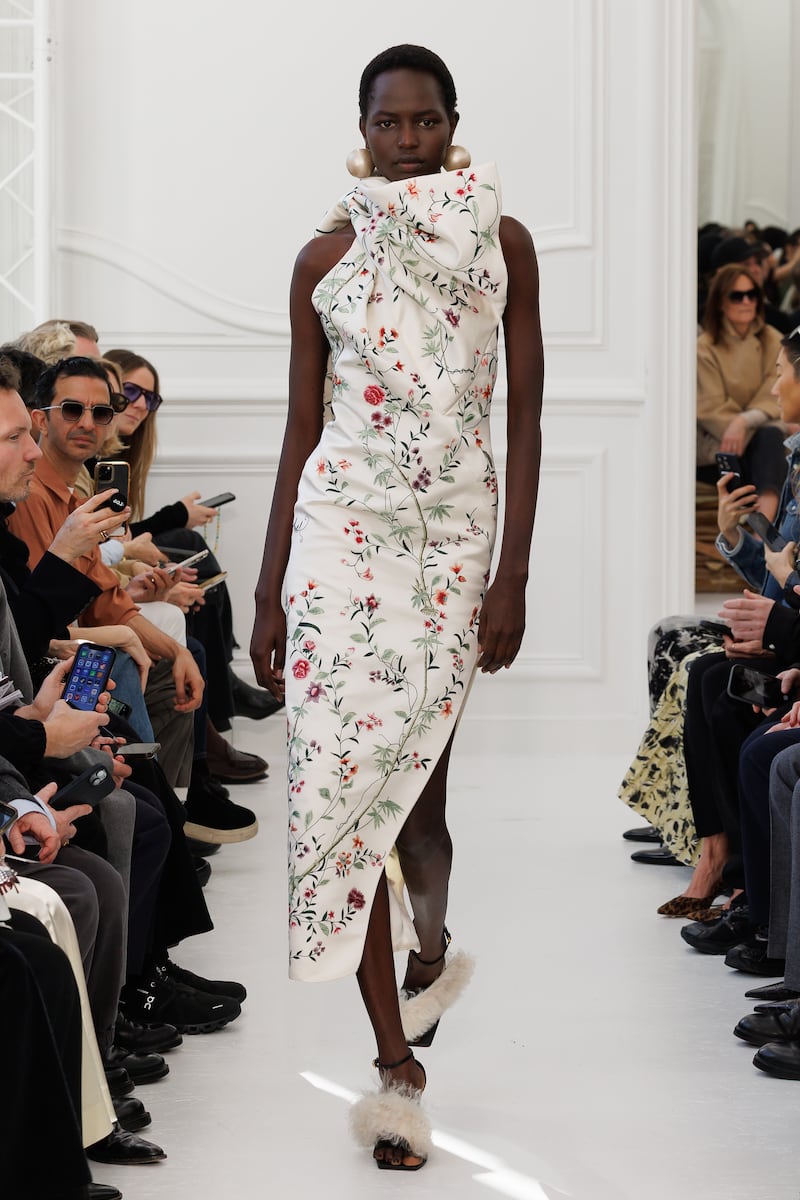
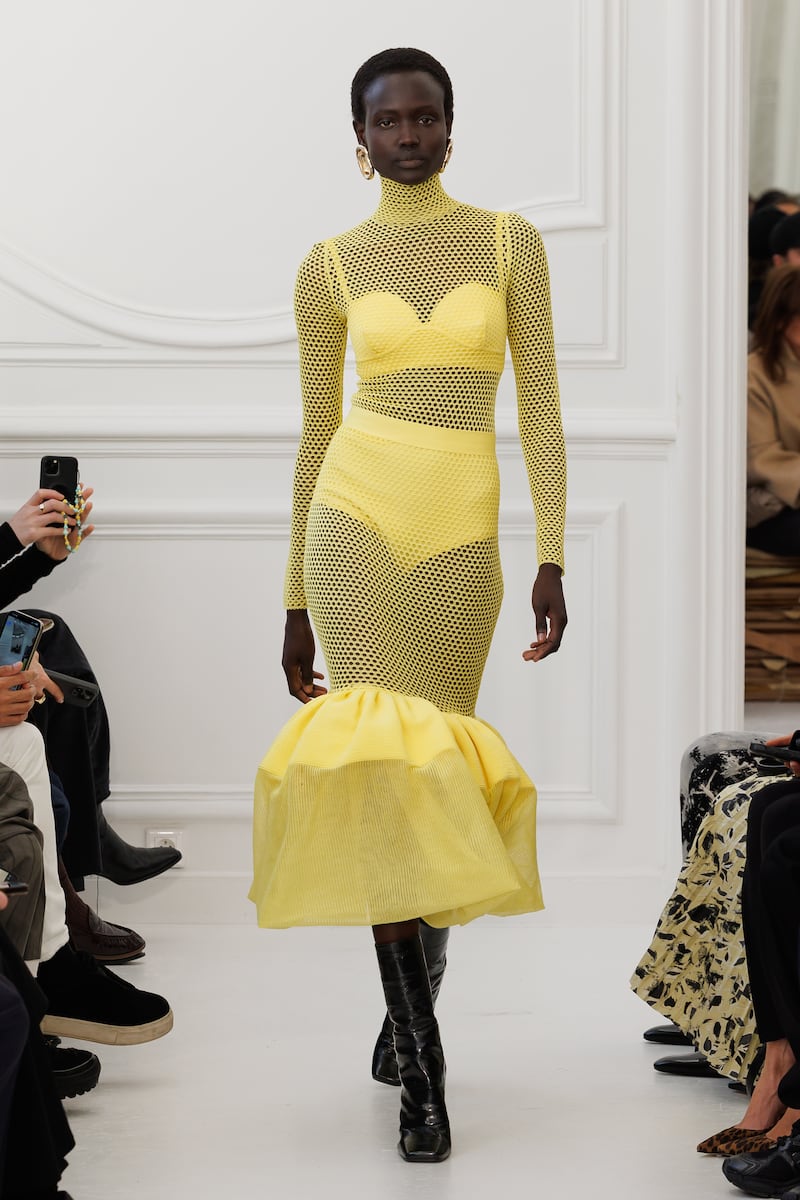
The Stockman, the dressmaker’s dummy, is silhouette at its most fundamental. Burton powerfully translated the idea into a black jacket made, she said, in the women’s atelier, but finished in the men’s. Strong of shoulder, nipped of waist, it featured sleeves she had twisted to create a cocoon effect. The lapel was scissored, the jacket skirt was hacked off high on the thigh. Threads trailed. “I love the idea of imperfection in beauty,” Burton said, echoing her mentor McQueen. “Everything’s slightly unravelled, because I think the whole world is unravelling.” She showed the jacket with bare legs. “There had to be a sort of sensuality to it, and a kind of youthful spirit, almost like you’d hacked it off yourself.”
Later, Burton applied exactly the same approach to a much more prosaic idea: a peacoat in slightly felted grey wool. Exposed seaming, exploded collar, hacked hem. If you don’t fancy a micro-pea, it also comes in a conventional coat length.
It was quite a statement to show pieces so incredibly precise but so brutally truncated.
There were more. A full-skirted, floor-length dress from 1952, in white Chantilly lace embroidered with lily of the valley, was similarly hacked out at the front, macro made micro. “Let’s just make it really, really short,” Burton told her team. She felt the irreverence, the lack of preciousness was more about how people wear clothes today. The dress had a sweeping sack (Watteau?) back that suggested a bridal veil. There was also a version in the same black lace that was originally used in ’52.
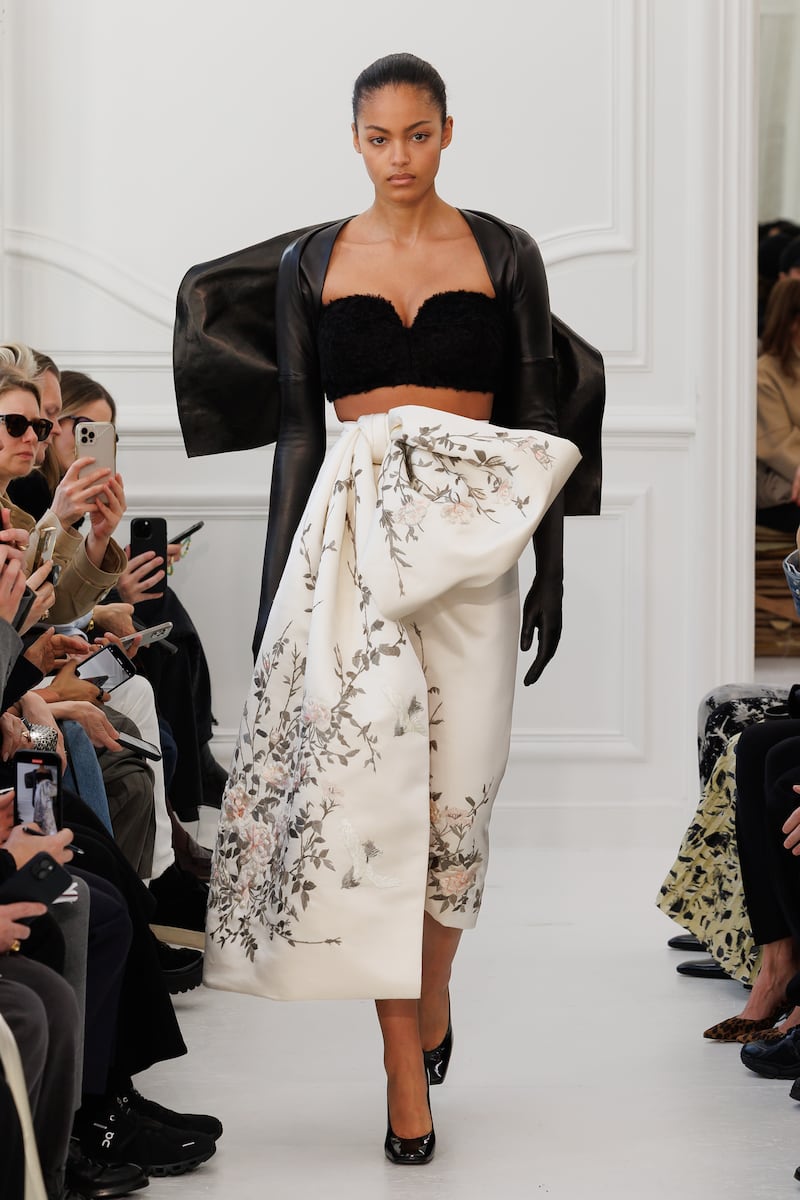
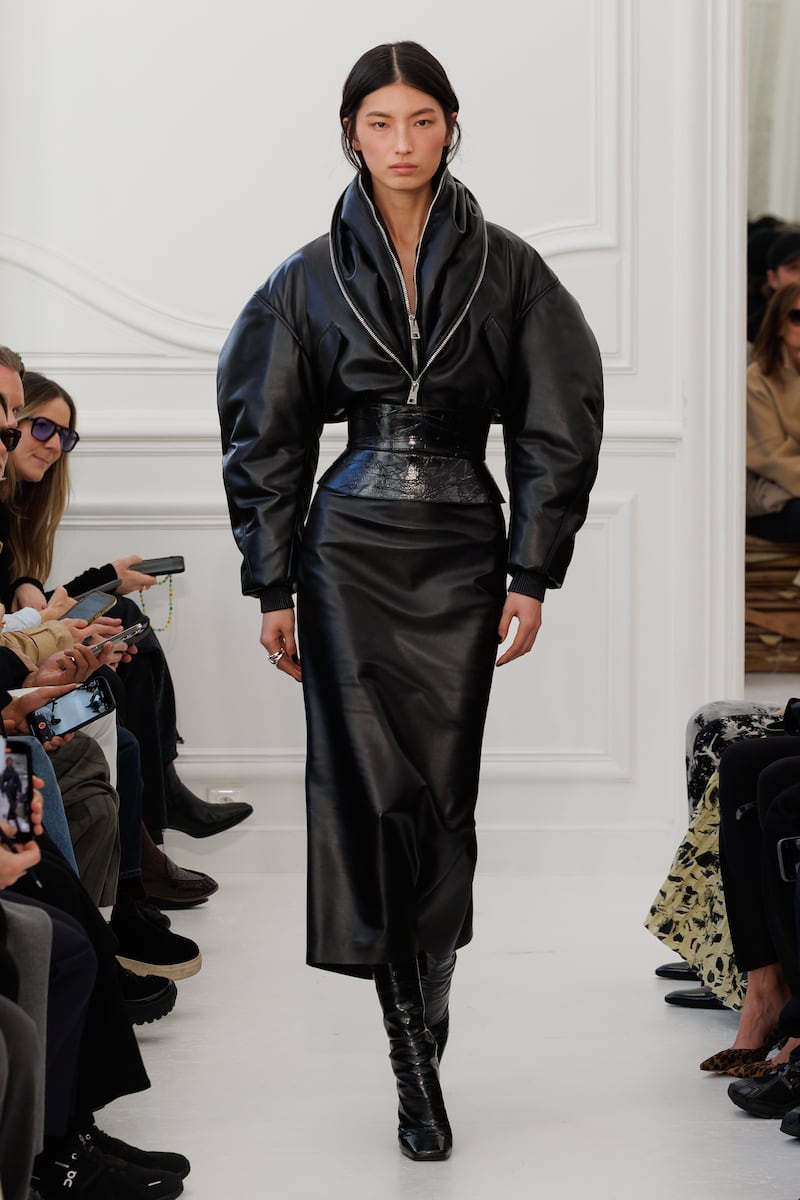
Burton claimed she was thinking about “sexiness”, about ways to reveal skin, in ways she hadn’t before. You sensed that experiment, not wholly successful, in a bullet-bra-big-pants-and-undulating-ruff outfit. “A genuine foundation garment,” she called it. It was actually all one piece of engineered knit, ingenious enough, but it looked like it had slunk out of Gloria Grahame’s boudoir in a steamy 50’s B-movie. The suggestion of fetishwear enthralled Burton. She loved the idea of “the skeleton of the clothes, how you start with the backbone and the underpinnings”. Burton showed the same thing in yellow, which curiously amplified the fetish element. (Yellow was the new Givenchy accent, as we might have deduced from Timothée Chalamet’s Oscar ensemble. “It’s fresh,” Burton insisted. “I did so much red at McQueen.”)
Much more accessible in the fetish department were the ravishing skins. A shirt and pencil skirt, (with a high slit) were cut from a leather that was bonded but super-soft. The look was very maîtresse to go with the cone-heeled pumps or the latex boots. A cropped leather bomber, shaped like a rounded cocoon, opened in layers like a flower, or a vulva. That was a reminder of Burton’s longtime allegiance to nature’s feminine power in her designs. There wasn’t actually much of nature here. Embroidered flowers furled round the hem evening dresses. A columnar gown, sliced at the sides, cut away at the back, was, said Burton, almost as though you’d wrapped yourself in the floral wallpaper from the walls of the room that Givenchy designed for socialite Bunny Mellon. It was a dress made for a gesture. Attached to the neck was a sweep of fabric for tying in a knot or a big, louche bow.
But not all gestures need to be so. One of the most memorable looks was the plainest, a wool suit whose jacket (broad shoulders, nipped waist) and trousers (soft, seamed in a curve that echoed the curve of a woman’s back) were worn by model-actress Malgosia Bela. She is easy to picture as every female designer’s alter ego.
“It’s been really nice to strip it all away,” Burton reflected before her show, “like a complete palate cleanser. You know, it’s very easy for me to embroider things and layer things on top of each other. But it’s quite nice to go, Okay, what’s the construction? How do I make it simpler? Maybe less is more at some point. Actually, the simplicity of cutting is more important for me. I one hundred percent needed that. I think it’s almost like what I was starting to do at McQueen at the end. Those last two shows were really my favourite ones. I really think this is sort of a continuation.” Burton emphasised that point when she came out at show’s end: bashful as ever, in her usual uniform of grey sweater and jeans. Life goes on.
Givenchy Autumn/Winter 2025
Disclosure: LVMH is part of a group of investors who, together, hold a minority interest in The Business of Fashion. All investors have signed shareholders’ documentation guaranteeing BoF’s complete editorial independence.
Content shared from www.businessoffashion.com.

